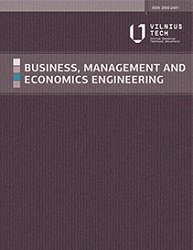Cluster analysis of the European Union gender equality and economic development
Cluster analysis of the European Union gender equality and economic development
Author(s): Oksana Vinska, Volodymyr TokarSubject(s): Gender Studies, Welfare systems, Economic development, EU-Approach / EU-Accession / EU-Development
Published by: Vilnius Gediminas Technical University
Keywords: cluster analysis; economic development; EU member-states; gender equality; GDP per capita;
Summary/Abstract: Purpose – The article aims at discovering classes and clusters of EU member-states considering their levels of economic development and gender equality to foster the enhancement of EU cohesion policy. Research methodology – The methodology includes the grouping by two parameters, economic development and gender equality, and the cluster analysis, the “far neighbor principle”, agglomerative hierarchical classification algorithm and the usual Euclidean distance as the distance between objects. Findings – There are no gender equality laggards among EU member-states. More developed countries belong to gender equality leaders, while there are two gender equality leaders and one gender equality adopter among transition countries. The group of less developed countries consists of six gender equality leaders and seven gender equality adopters. Research limitations – The results of cluster analysis may be impacted by off-shore activity of Ireland and Luxembourg. Practical implications – The EU supranational bodies can use our results to develop more efficient cohesion policy tools to ensure the adherence to the principle of gender equality. Originality/Value – The study is a pioneer one in determining nine classes and five clusters of EU member-states considering their levels of economic development and gender equality, as well as in introducing three types of countries depending on their level of gender equality, namely gender equality leaders, adopters, and laggards.
Journal: Business, Management and Economics Engineering
- Issue Year: 19/2021
- Issue No: 2
- Page Range: 373-388
- Page Count: 16
- Language: English

